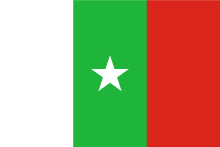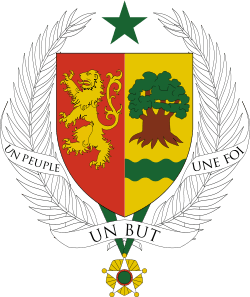Casamance


Casamance (French pronunciation: [kɑ.za.mɑ̃s], Portuguese: Casamansa[1][2][3][4] [kɐzɐˈmɐ̃sɐ]) is the area of Senegal south of the Gambia including the Casamance River. It consists of Basse Casamance (Baixa Casamança, Lower Casamance i.e. Ziguinchor Region) and Haute Casamance (Alta Casamança, Upper Casamance i.e. Kolda Region and Sédhiou Regions). The largest city of Casamance is Ziguinchor.
History
The Casamance was subject to both French and Portuguese colonial efforts before a border was negotiated in 1888 between the French colony of Senegal and Portuguese Guinea (now Guinea-Bissau) to the south. Portugal lost possession of Casamance, then the commercial hub of its colony. Casamance, to this day, has preserved the local variant of Upper Guinea Creole known as Ziguinchor Creole, and the members of the deep-rooted Creole community carry Portuguese surnames like Da Silva, Carvalho and Fonseca. The historical ties to Portugal were a factor in Senegal's decision to seek membership of the Community of Portuguese Language Countries (CPLP), becoming an associate observer in 2008.[5] Interest in Portuguese heritage has been revived in order to exert a distinct identity, particularly in Baixa Casamança.
Bissau-Guinean people are also present in the region, as expatriates, immigrants, and refugees from the poverty and instability that since long affects the neighbouring country, including the 1998—1999 Guinea-Bissau Civil War.
Separatist Movement
Though the Jola are the dominant ethnic group in the Casamance, they represent only 4% of the total population of Senegal. The Wolof dominate the nation as a whole. The Jola's sense of economic disenfranchisement within greater Senegal contributed to the founding of a separatist movement advocating the independence or autonomous administrative division of the Casamance, the Movement of Democratic Forces of Casamance (MFDC), in 1982.[6]
The MFDC's armed wing was established in 1985, and since 1990, the Casamance conflict, a low-level insurgency led by the MFDC against the government of Senegal that has been characterized by sporadic violence and frequent but unstable ceasefire agreements. An illegal shipment of weapons hailing from Iran was seized in Lagos, Nigeria in October 2010, and the Senegalese government suspected the MFDC of having been the intended recipients of the weapons. Senegal recalled its ambassador to Tehran over the incident.[7]
Climate
The climate is low-lying and hot, with some hills to the southeast. The Region has average rainfall greater than the rest of Senegal, with most areas receiving over 50in/1270mm annually, and as high as 70in/1780mm in some places. The entire Casamance region experiences a tropical savanna climate.
Economy
The economy of the Casamance relies largely on rice cultivation and tourism. It also has excellent beaches along its coastline, particularly at Cap Skirring.
References
- ↑ Novo Dicionário da Língua Portuguesa, verbete criol: Língua derivada do português e de várias línguas africanas, falada pela maior parte da população da Guiné-Bissau e da Casamansa (S. do Senegal)
- ↑ Dicionário Onomástico Etimológico da Língua Portuguesa
- ↑ Vocabulário Onomástico da Língua Portuguesa da Academia Brasileira de Letras
- ↑ "Língua Portuguesa com Acordo Ortográfico [em linha]. Porto: Porto Editora, 2003-2015.".
- ↑ "OBSERVADORES ASSOCIADOS" (in Portuguese). CPLP. 10 July 2008. Retrieved 14 November 2016.
- ↑ "New clashes between the Senegalese army and Casamance pro-independence militias". Nationalia. 2010-03-23. Retrieved 2010-04-11.
- ↑ "Senegal recalls Tehran ambassador over arms shipment". BBC News. December 15, 2010. Retrieved December 15, 2010.
- Vincent Foucher, "Church and nation. The Catholic contribution to war and peace in Casamance (Senegal)", LFM. Social Sciences and Missions N°13/October 2003
External links
- Casamance.net (French)
- Oxfam America, Background on the Casamance Conflict
- Alassane Diop, Weblog Commentary
Coordinates: 13°00′55″N 15°19′04″W / 13.01526°N 15.31769°W
